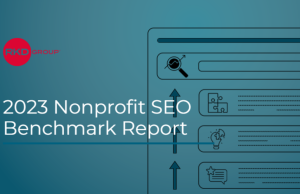Technology might be increasingly called upon to make up for less-than-desired changes to nonprofit activity. Some 42% of nonprofit officials surveyed responded the number of programs they offer has dropped. Almost 50% indicated participation has similarly declined, according to the 2021 Nonprofit Technology Trends Report, a new study from San Jose, Calif.-based Sage Intacct.
The input from more than 500 nonprofit leaders helped paint a picture of changing technology use — and frustrations. Around 35% said their biggest internal frustration was a lack of process automation and organization efficiency, only slightly more than the percentage citing inefficiencies and delays due to multiple, disparate systems. Just more than 30% groused about manual (and therefore time-consuming) reporting, while slightly fewer than 30% bemoaned a lack of real-time visibility into key metrics and performance indicators. More than one quarter said they didn’t have any way to measure outcome metrics.
Technology has had a positive impact on nonprofit communication. Seven in 10 managers changed their social media strategy due to the coronavirus pandemic, with 62% of those reporting increased engagement with the organization, usually through sharing mission impact via newsletters, social media or a website. More than 20% of respondents said their mobile or online giving had increased.
For the most part, however, technology supports back-end functions. The top three uses within nonprofits were financial management, website and payroll functions. Donor-facing functions such as online giving tools, customer relationship management tools or grants management software were toward the middle of the pack, while relatively few nonprofits report using strategic programs such as analytics software or budgeting and planning tools.
The emphasis on financial management is being reflected in communications. During 2020, 74% of respondents brought their finance team in when crafting their impact story, up from 64% a year earlier. Small wonder, then that the ability to automate financial reporting was a top software priority in 2020, followed by the ability to integrate with other systems, the ability to manage multiple funds through accounting, the ability to automate tracking and reporting of outcome metrics and the ability to automatically consolidate multiple entries.
The study also examined nonprofit funding trends. Asked about 2020 funding, nearly six in 10 (58%) reported revenue drops during 2020. But more than half of those experiencing revenue decline said their funds had dropped by less than 25%, which the report writers believe indicates a potential faster recovery.
Foundations and the government gave give some financial relief: nearly one-third reported foundation grants and government funding increased during the year. These increases were unfortunately balanced by the more than 40% of respondents who said corporate giving had dropped, representing the biggest falloff among sources, followed by individual giving, which 40% reported as falling.
Unsurprisingly, 69% said the cost of their programs decreased or remained flat, a trend likely attributable to the drops in participation and inability to offer programming at previous levels.
Even that, however, has a silver lining. Just over three-quarters (76%) reported maintaining or increasing their donor base during the year, while nearly as many said their average gift size remained steady or increased. The overall increase in donor bases means people were still trying to give something – and will be accessible in future years when the economy turns around.












